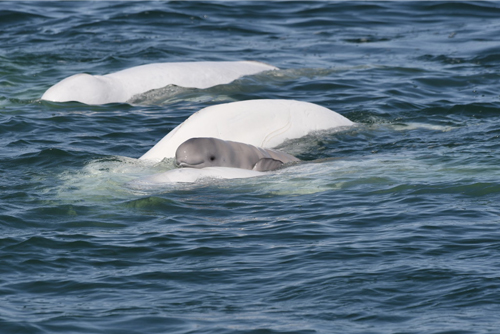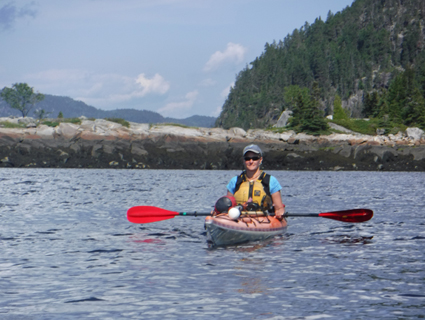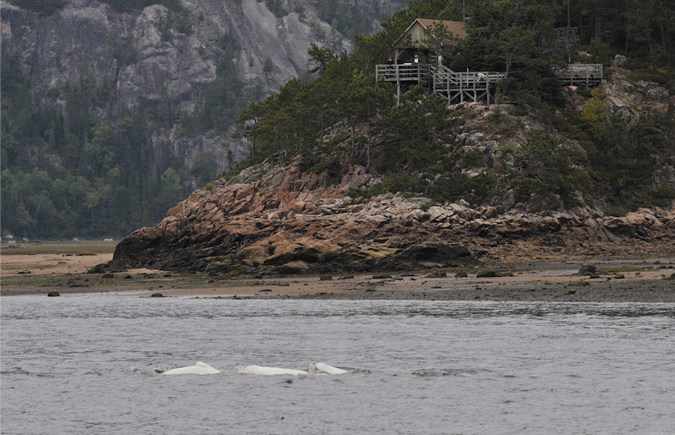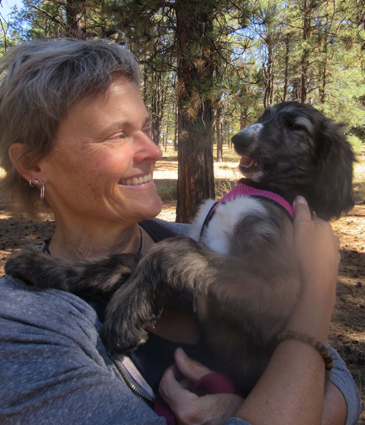“Life is Love: The St. Lawrence Estuary Beluga Whales”
Issue #8, April 2019
TABLE OF CONTENTS
Lise Weil, Gillian Goslinga, Nancy Windheart, Jacqueline Freeman, Anne Bergeron, Ann Drake, Britta Love, Andrea Mathieson, Kristin Flyntz
Editorial
Gillian Marie Goslinga
Love as Fierce as Death: A Tribute to Deborah Bird Rose (1946-2018)
Nancy Windheart
Life is Love: The St. Lawrence Estuary Beluga Whales
Jacqueline Freeman
Prey–er
Anne Bergeron
How I Came to Be With Water
Ann Drake
The Universe is Vibrational: Teachings from the Rainforest of Borneo
Britta Love
Heal/Weave: Learning from Plant Medicine and Altered States
Andrea Mathieson
Snake Medicine: Remembering the Eros of my Animal Body
Jen Skunk
This Moment
AFTERMATH: 11/9
Dreams, Nightmares, Visions
Kristin Flyntz
Orangutan Mercy
Rebekah Parr
“Touch Me or You’ll Die”
Nancy Windheart
Life is Love: The St. Lawrence Estuary Beluga Whales

Nature operates by laws, and at the core of things they are our laws too. We’ve simply forgotten. We’ve separated ourselves. We’d rather not hear the conversation of death in which we all participate. …Death is fate. And animals—us included—are born knowing how to die.
Eva Saulitis, Into Great Silence: A Memoir of Discovery and Loss among Vanishing Orcas
July, 2018
I arrive in L’Anse–Saint–Jean, Quebec, in the early evening. Twilight colors the sky and the massive walls of the Saguenay Fjord in a wash of blue, purple, and pink. I’ve come to this place to spend time with the St. Lawrence Estuary Beluga Whales, an isolated population that lives in this fjord and in the St Lawrence River. These belugas are severely endangered and facing the threat of extinction.
I’ve come to be with the belugas, to listen to them, to hear, feel, sense and understand their viewpoints, their experiences, and their understanding of their situation, and to learn what I can from them about facing the global crises of climate disruption, species extinction, and the extreme and precarious situation all beings on our planet are now facing. In my mind, I’m referring to my travels to be with these and other endangered cetaceans as “The Extinction Tour.”

The whales and dolphins are my spiritual family and teachers, my guides, my friends. My heart breaks, over and over again, when I think about a world without them in it…as it does when I recognize all of the other non–human species we are losing at a staggering rate every single day.
I’ve come to learn from these belugas…and also to offer them my presence, my willingness to bear witness to their lives, their understanding, their perspectives, as well as my translation skills as an interspecies communicator and telepath, sharing whatever they wish me to share with those of my species who wish to hear it.
As I look out over the fjord, I feel the quiet of this place…the stillness of the fjord, the softness of the village. It reminds me of Norway.
I sense the belugas out in the dark waters of the fjord; I begin to attune my energy to their beautiful, gentle spirits. I understand that they know I’m here, that I’m coming to be with them. They give me a name which I hear in their language; my best translation of its meaning is “Little Sister.”
*****
1983
My first encounter with beluga whales was at the Minnesota Zoo. I was eighteen years old and a freshman in college; it would be many years before I’d become an advocate for animals and raise my voice about the immorality of keeping sentient wild animals in captivity for display.
I’d come with my best friend, an aspiring opera singer with whom I’d fallen in love. I remember vividly the stark contrast between my joy and exhilaration at spending the day with her, and the empathic grief and despair I felt as I watched the two belugas, who had been captured in the Arctic, circle desperately in their too–small enclosure. I felt the horror of these highly social creatures, who were used to traveling in large and complex groups over long distances, being separated from their community, their families, their home, enclosed in a tank. They did not survive their captivity, and the beluga program at the zoo was later discontinued. The desperate, vacant look in their eyes as they briefly met mine through the aquarium glass continues to haunt me.
*****

July, 2018
I wake early in L’Anse–Saint–Jean and make my way to the marina, where I join a small group and guide for a three–day kayak expedition into the fjord. I pack my gear into the boat, offer a prayer, and connect with the belugas.
We cross the fjord and make the easy paddle to Baie Sainte–Marguerite, the summer “nursery” for the belugas, where they give birth in the warm, shallow waters of the bay and raise their young. Researchers have set up a station in the middle of the bay, where they spend their days observing, listening to and recording the belugas with their hydrophones, and flying small drones to study them. There is a small campground and beach near the bay, and families with children and tourists with cameras and binoculars watch the belugas from the observation areas on the shore.
The new regulations to better protect the belugas, instituted in 2017, are strict. We’re stopped by a national park patrol boat and instructed to take a particular route around the bay, not stopping, and avoiding the critical beluga areas. As we paddle, I see their white forms and blows in the distance. My heart leaps with joy. We paddle to our camp on the edge of the bay, pull our boats up on the rocks, and set up our camp on a high bluff.
After dinner, I go down to the water for a swim and to watch the sunset. I dive into the cold water; when I surface, the belugas are there, not far from the shore. I hear them breathing and calling to each other. They are dancing. I sing to them. They are everywhere I look.
“My beloveds”, I sing, ‘My beloveds”. There is grief in my song, and longing, and honor, and love.
The response comes clear, quick, certain: “We’re okay.”
“But you’re not!” I say. “You’re in trouble! Your population is dwindling, your babies are dying, you are often unable to breed or bring a pregnancy to term. Your bodies are filled with toxins from the human world. You’re dying.”
And they show me, through feeling, direct transmission, straight into the awareness of my heart, that, while these things are indeed true, their experience of their lives is not like that. It’s not how I describe it to them.
They say, “We’re not having so many babies.” They say, “Our babies sometimes die.” They say, “Sometimes the water is so noisy and we have a hard time hearing each other.”
And they say, “We’re okay. Our lives are good. We have food, we have each other. We play, we mate, we raise our young, we gather together and sing our songs. We mourn our dead. We swim to the big waters and join with all of our kin. We play with boats and with the humans. We share our joy freely with those who come here. We love.”

There is a quality of purity in their energy and in their communication. It is playful, gentle, filled with softness and a particular sweetness–a unique energy blueprint different from the other cetaceans I’ve spent time with. They are innocent, but not naïve…it is an innocence that is simple, pure.
They show me that they carry ancestral memory in their cells and in their deep awareness. It is not memory like our human memory, but rather a knowing, a deep understanding, a complete library of knowledge, from the old ones who endured the killing times, when belugas were hunted by the tens of thousands. They know their history, they know the story of their kin.
They say, “Now the humans sing to us, take care of us, watch us, admire us. They laugh and bring their children to play in our waters.“ They show me that they know the research scientists by their energy signatures and their boats, and that they are aware of the drone. They hear it and feel it, but it doesn’t disturb them.
I ask them about boat noise. “Yes, it disturbs us”, they say. “It’s not so much the noise of the boats as it is the vibration.” They show me their intense sensitivity, and tell me that the boat vibrations interrupt and confuse their conversations with their young ones. They say, “Quiet boats are interesting and fun. We love them, and we love to play with them!”
They show me the taste and feel of the herring and other small fish that they eat. I sense the soft juiciness of it, the way it feels in their mouths, whole gulpfuls of fish…pungent and exquisitely sweet.
When the tide comes in, they say, they dive down deep. “The food moves, and so do we,” They dive deeper at high tide; at lower tides, they stay nearer to the surface.
As the sun sets, I take out my native American flute and play a song for them, for me, for us. I hear them calling as night settles in; I answer with a melody from my flute. All becomes quiet, the moon rises, and I walk in darkness to my tent. I sit for a long time looking at the stars, feeling the presence of the belugas, filled with gratitude for the great gift of their presence.
The next morning, we pack our camp and load our boats. As we paddle out into the fjord in the morning light, suddenly the belugas are coming straight for us. They surround our boats. People laugh and exclaim and take photos and video. After a few minutes, they swim away, and my companions begin to paddle downriver.
I turn to say a last goodbye, sing a song of blessing, offer a prayer of gratitude and thanks. Immediately, the pod turns and swims back to me at full speed, surrounding my kayak. “Little sister”, they sing. My eyes fill with tears, and I laugh and laugh as they bump my rudder, circle around and around my kayak, looking at me directly with their beautiful eyes. They surround me, and time stands still. We are together, we are floating in the joy of union. They are offering me the darshan of their species, the blessing of their communion, their connection, their awareness, their beauty. I am floating in the waters of beluga joy and love.
Eventually, I realize that my group is far away, and the regulations (which clearly the belugas haven’t read!) require me to keep moving. I communicate to them that I need to move, but that I welcome them to swim along with me if they wish. As I begin to paddle, they follow me. Swimming at my stern, bumping the boat, vocalizing, breathing. I laugh, I sing, I weep. We travel together like this until the fjord bends and the water changes. At that moment, they look at me and say, “This is where we must stop and go back to our family”. They turn as quickly as they came and head back to the bay.
I feel how much we and all life on Earth would be impoverished by the loss of their frequency, their energy, their particular expression of being. This purity. This sweetness. This depth of awareness. This joy.
I ask them if they recognize their extremely precarious situation as an endangered population. “We hear about it telepathically from the humans…yes. But this knowing does not affect how we live our daily lives, in our communities, our families.”
They say, “This is what we want to share with humans: keep loving, keep living, keep swimming. Be open, be curious, live in love.”
“We are having our babies,” they say. “We are living our lives. Yes, we grieve. Yes, we die. And our lives are love.”
As I consider the question, “What does it mean, to heal?” I think of the belugas…and I consider personal healing, species healing, planetary healing in the context of grief, loss, destruction, and death.
As I face my own grief in witnessing mass extinctions, including the very real possibility of the extinction of our own species, and the heartbreaking shifts and changes on our beloved planet home, I remember the belugas. Perhaps healing is learning how to live life fully in the presence of immense grief, aware of the certainty of death, of the impermanence of all things, including each individual life and the collective lives and particular gifts of each species.
Can we live in love, even as our world is burning? Can we live in love, even as we witness immense suffering all around us? Can we live in love, in joy, in playful exuberance, at the same time as we grieve, as we offer our presence and tears and sorrow for all that is being lost?
I think of my beluga teachers as I consider these questions. They are not naïve. They have full awareness of their situation, the reality of their lives and deaths. Yet, with this full awareness, they love. They reach out to our species, not in bitterness, but in play, in joy, in love. Their benevolence, their kindness, their purity, is astounding. Can I prove that they are sharing love with me, and not just expressing a natural curiosity? No, I can’t. But I know love when I feel it…I know its vibration in my body, its frequency, its energy. I know the expansion in my heart as I connect deeply with another being, and they with me. I know no other word for this than love. It is connection. It is a deep resonance of kindred beings. It is life. Life, the belugas teach us, is love.
It’s our birthright to know love as the essence of life, the essence of the entire manifest world, the ultimate reality of all that is. We live, and die, in a vast field of love. The belugas know this, and they offer this teaching to us.
What does it mean, to heal? Perhaps it means to love wildly, exuberantly, passionately, no matter what. To love as we suffer. To love as we grieve. To love as we face our own death, and the deaths of those we love. As we love, we heal…as we heal, we love.
Photo Credits: Beluga Whales, Copyright GREMM, https://gremm.org/en/;
Nancy Windheart by Frank Bevaqua;
Evening Fjord by Nancy Windheart;
Whales, Copyright GREMM, https://gremm.org/en/

Nancy Windheart is an internationally respected animal communicator and interspecies communication teacher. Her work has been featured in television, radio, magazine, and online media, and she has written for many digital and print publications. Nancy’s life’s work is to develop deep harmony and understanding between species and on our planet through interspecies communion, connection, and communication, and to facilitate physical, mental, emotional, and spiritual healing and growth for beings of all species through her services, classes, training programs, and retreats. She lives in Santa Fe, New Mexico, with her animal family of dogs, cats, and chickens. To learn more visit www.nancywindheart.com.
To comment on this article, please click here.
Copyright © 2014-2021 Dark Matter: Women Witnessing - All rights reserved to individual authors and artists.
Email: Editor@DarkMatterWomenWitnessing.com
Please report any problems with this site to webmaven@DarkMatterWomenWitnessing.com
